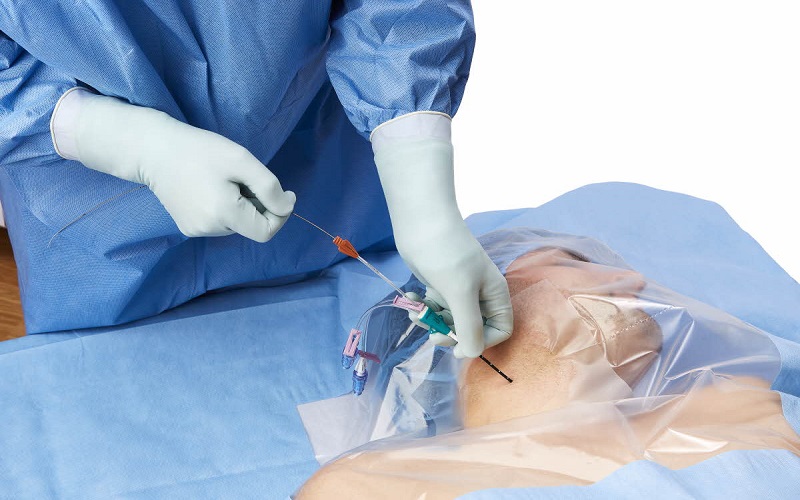Central venous catheters are essential tools in modern healthcare that serve several other applications beyond their primary use for venous access. These medical devices are inserted into large veins, such as through the neck, chest, or groin, to facilitate the administration of fluids, and medications, and monitor various physiological parameters. This blog talks about the crucial changes happening in the central venous catheter market, including new product launches and the involvement of leading market players in the industry.
Diverse applications of central venous catheter
Central venous catheters (CVCs) are flexible and thin tubes that are inserted into a large vein present somewhere in the chest, or arm. Such types of catheters possess the ability to provide potent medication, chemotherapy drugs, nutrients, blood, and various other fluids to patients suffering from critical medical conditions. They also allow for a quick sampling of blood needed to perform several medical tests. The use of CVCs minimizes the risks associated with peripheral intravenous lines.
In some cases, patients with end-stage renal disease require regular hemodialysis to remove waste products and excess fluids from their blood. Here, CVCs are employed as vascular access for hemodialysis, providing a reliable and efficient conduit for connecting the patient to the dialysis machine. Therefore, many healthcare professionals use CVCs for patients with kidney failure to improve their quality of life.
In critical care scenarios, CVCs equipped with specialized catheters can measure Central Venous Oxygen Saturation (ScvO2). This parameter provides insights for balancing the oxygen supply-demand ratio in the body and accordingly guides therapeutic interventions in conditions like sepsis and heart failure, helping to optimize patient outcomes.
Moreover, CVCs are invaluable for patients who cannot meet their nutritional needs orally. They ensure the delivery of nutrients directly into the central circulation. Through this method, adequate caloric intake is established, and the patient’s nutritional status is sustained, especially in the case of gastrointestinal disorders or post-surgical conditions.
As per a new report published by Allied Market Research, the global central venous catheter market is predicted to grow at a CAGR of 6.4% during the analysis period from 2023 to 2032.
Product launches
Owing to the increasing pervasiveness of chronic diseases such as kidney failure among individuals, many leading market players have come up with innovative product launches. A notable example is the launch of Centros, a self-centered, tunneled hemodialysis access catheter by AngioDynamics, a renowned provider of innovative medical devices. This catheter could bring a new approach to central venous dialysis catheters. It could be placed in the superior vena cava without affecting the vein walls. It could allow uncompromised blood flow for a longer period than existing catheters.
Mergers and acquisitions
The central venous catheter market has also undergone a series of mergers and acquisitions to foster the competitive scenario. For instance, Merit Medical Systems, Inc., a leading global manufacturer and marketer of healthcare technology announced the acquisition of the Biopsy Tract Sealant System and dialysis catheter products from AngioDynamics, Inc. With this acquisition, the companies aimed to expand the specialty dialysis device offerings that include HeRO® Graft, the Surfacer System devices, and WRAPSODY™ Cell-Impermeable Endoprosthesis.
To sum up, the central venous catheter market is experiencing significant growth owing to lots of reasons such as the rising cases of accidents and patient hospitalization for critical care, and the growing prevalence of chronic diseases such as cancer or cardiovascular diseases. In addition, the increasing number of surgeries and rising cases of emergency health conditions may skyrocket the demand for central venous catheters among healthcare professionals in the upcoming years.




